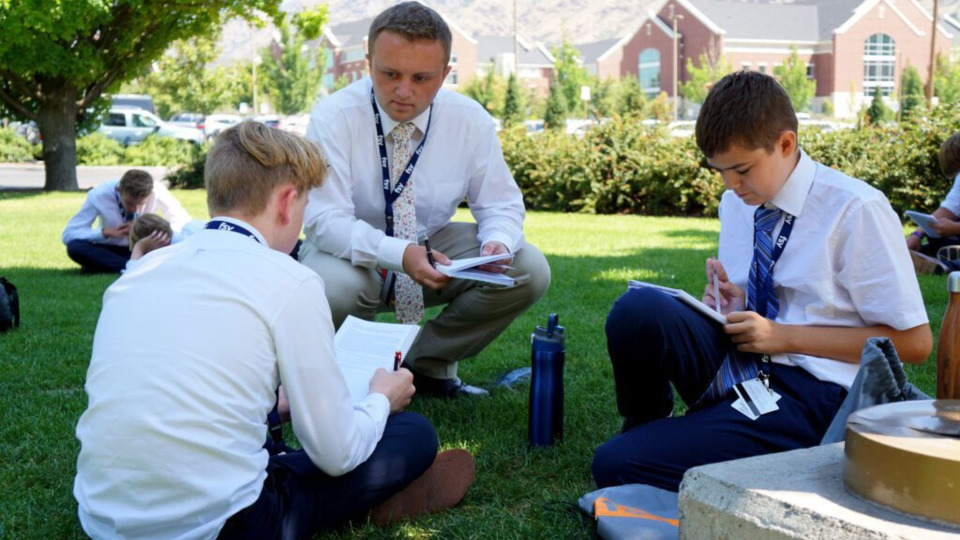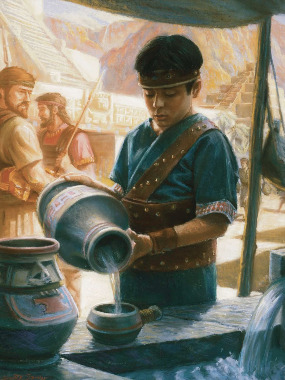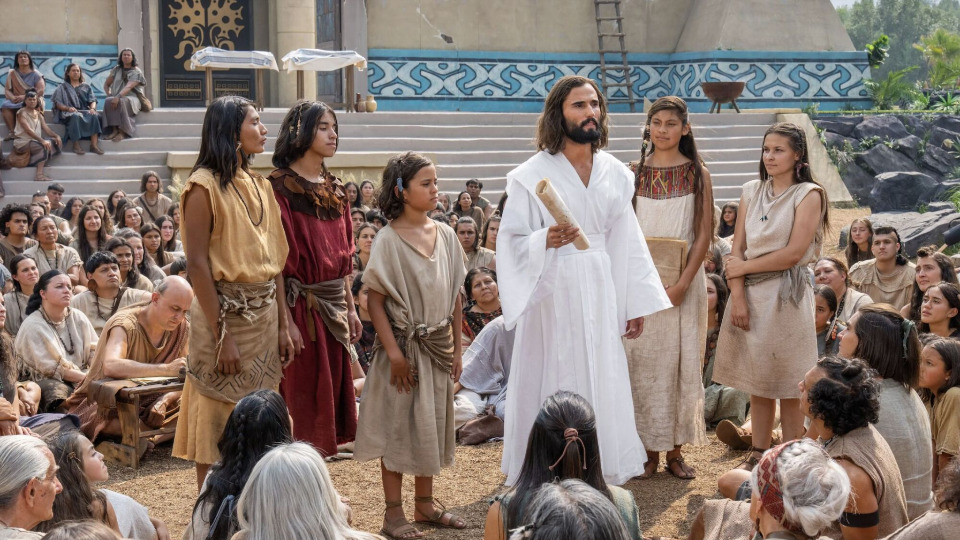
This story appears here courtesy of TheChurchNews.com. It is not for use by other media.
By Brother John G. Bytheway, Member of the Young Men General Advisory Council
Today’s young men need mentors and examples of true manhood in their lives. While being a “good example” is important, intentional mentoring is much more vital in a world of shifting values and confusing social media. The Book of Mormon contains a number of examples of fathers mentoring sons and mature men mentoring younger men.
We can identify mentoring principles by studying Alma’s counsel to his three sons, Helaman’s inspiring words to the stripling warriors before battle, and the tender words of Mormon to his son Moroni as they witnessed the decline of the Nephite civilization. We can remember that Mormon was only a child when he was approached by Ammaron:
“And about the time that Ammaron hid up the records unto the Lord, he came unto me.” (Mormon 1:2).

“He came unto me” is a little phrase with a lot of power. Ammaron must have known about young Mormon, and his progress in learning the doctrine of Christ. At some point “he came unto” Mormon — note that Ammaron sought out Mormon, not the other way around. Young men might not seek out mentors, but mentors can seek out young men.
On one occasion, I was away on business while my son was participating in an important sporting event. How wonderful it was to get text message updates and even a video clip from a mentoring bishop who was aware of my son, who knew what he was doing, and who showed up where he was. Mentors make a difference.
“And Ammaron said unto me: I perceive that thou art a sober child, and art quick to observe;” (Mormon 1:2).
How did Ammaron know so much about 10-year-old Mormon? Perhaps Ammaron, a historian himself, was also “quick to observe.” He knew that someday, someone else would have to take custody of the records and complete the history of the Nephites. Ammaron knew enough to receive inspiration and revelation about a child in his midst who could accomplish the work.
Ammaron, a respected adult, shared information about Mormon’s gifts and talents that young Mormon was probably not aware of in himself. By articulating these traits for Mormon, Ammaron was also giving the young man something to live up to. Elder Neal A. Maxwell observed:
“Each of us, from time to time, is mentored and has chances to mentor. In my experience, truthful and caring one-liners that occur within such nurturing relationships have a long shelf life! You can probably recount three or four examples of how people have said something — probably a sentence or clause — and you remember it still. It moves and touches you still. Such has been the case with me” (“Jesus, the Perfect Mentor,” Ensign, February 2001).

My mission president, another important mentor in my life, used to say, “A good leader trains leaders as he leads.” The record does not say very much about the continuing relationship between Ammaron and Mormon, but Ammaron could be seen as a mentor and trainer to Mormon to help him further develop those traits of having a “sober mind” and being “quick to observe.”
“Therefore, when ye are about twenty and four years old I would that ye should remember the things that ye have observed concerning this people; and ... go to the land Antum” (Mormon 1:3).
A good mentor does more than just tell someone what they are good at. He gives them a path, a project and a purpose. He challenges them to become a “man of Christ” as Mormon himself would later call it (see Helaman 3:29).
The Aaronic Priesthood quorum theme mentions three important mileposts along the covenant path. “I will prepare to become a diligent missionary, loyal husband, and loving father.” Mentors can speak from experience as they themselves have navigated this path and can share with a young man the blessings and rewards and temptations that lay ahead.
The principles within Ammaron’s mentoring of Mormon could be summarized like this:
- Inspired adult mentors are aware of their youth, they know them by name, and they meet them where they are.
- Inspired adult mentors perceive and share with the youth character traits and gifts they may not have discovered in themselves.
- Inspired adult mentors encourage their youth by a path and a purpose — something to do, and a reason and motivation to do it.
What is the ultimate goal behind all this mentoring? To create lifelong disciples of Christ.

Perhaps because of Ammaron, and because of Mormon’s willingness to receive spiritual tutoring, we read this thrilling testimony a few verses later:
“And I, being fifteen years of age and being somewhat of a sober mind, therefore I was visited of the Lord, and tasted and knew of the goodness of Jesus” (Mormon 1:15).
Being a good example is always a wonderful thing, but today, we need more. Our young men need more. They need inspired mentors who see more in them than they see in themselves. They need men of Christ who also know of the goodness of Jesus. They need you.
Copyright 2024 Deseret News Publishing Company.